Home »
Introduction
Synthetic diamonds are considered to be one of the most useful results of technological advancements that have happened in the past few decades. Unlike other inventions, lab grown diamonds manufacturer do not have disadvantages that make them less preferable than mined diamonds. In fact, these gemstones are becoming popular by the day.
In terms of physical properties and looks, synthetic diamonds are not different from natural rough stones. Yet, there are considerable differences between the two. Knowing these differences can help to analyze a diamond better.
Mode of origin
Natural diamonds are the result of environmental changes and circumstances that decide the nature and texture of the rough stone formed. Immense heat and pressure that arise as the consequence of different natural phenomena lead to the formation of these incredible stones that vary in size, texture, and color.
Diamonds are found deep under the Earth’s crust. The depth can go up to 150-200 km below the surface. Due to the high pressure here, the carbon particles present in the soil get crystallized forming the stones that we call as diamonds. Going below the surface to reach these diamonds is nearly impossible. Nature does play a part in bringing these stones near to the surface as well. The formation of molten magma under the crust, at temperatures of 900 to 1,300 degrees Celsius along with 45 to 60 kilobytes pressure becomes a path for the diamonds to reach the upper layers. When the magma erupts and expands, the rocks bearing the diamonds also move upward with it, making it easy for the humans to reach them.
These diamond bearing rocks are then dug out through mining, which involves physical labor and machines. The process is difficult and carries risk elements for those who become a part of it. Extraction of diamonds is done in different ways, such as pipe mining, alluvial mining and marine mining.
Lab grown diamonds manufacturer and wholesaler, on the other hand, are completely formed in a side a laboratory. From the beginning till the very end, synthetic diamonds are the products of a manually created atmosphere where diamond seeds taken from natural diamonds are developed in diamond-making machines. The lab grown diamonds are primarily of two types: HPHT diamonds and CVD diamonds.
The HPHT or High Pressure, High Temperature method is where high pressure and high temperature is applied to graphite. The intense atmosphere makes the graphite dissolve into carbon atoms and these particles with the help of a liquid nickel or cobalt get coated around the diamond seed. The whole process happens inside a small capsule. CVD diamonds are the result of the method called Chemical Vapor Deposition. Here, the diamond seed is placed inside a chamber filled with hydrocarbon gas. At low temperature and high pressure, the carbon particles from the gas start to attach themselves to the seed, with time making it grow in size. The CVD method is more cost-friendly compared to the HPHT method.
Time taken for the formation
Natural diamonds are the result of years of changes that happen in nature. A diamond takes approximately 1 to 3 billion years to form. This is due to the requirement of the right conditions and the slow mode in which these conditions develop.
Lab grown diamonds take a period of 3 to 4 months for the formation. As the atmosphere is artificially created, the process of formation is smoother and faster compared to natural diamonds. Unlike natural diamonds, the path of formation is not affected by any other phenomenon. Once placed inside the machine, the diamond seed stays at the same place it reaches its matured state. Once the diamond reaches its final form it is taken out, analyzed, and polished.
Environmental Impact
Rarity and difficulty to extract make natural diamonds valuable. Yet, the same reasons are also why these gemstones are losing their place to synthetic diamonds. The procedures that are involved in extracting natural diamonds are harmful not just to the Earth, but also to other living beings including humans. Mining leaves huge holes that affect the ecosystem. This leads to further problems such as soil erosion, deforestation, landslides, earthquakes, etc.
Indigenous communities across the world are often under threat as mining takes up land. They are helpless even when their livelihoods are affected severely due to these activities. Often they lose their homes in the process. Moreover, manual labour involved is at risk of serious injuries or even death. Workers are exploited and are made to work without adequate safety measures. Child labour, another major problem is now strictly banned in many countries.
With synthetic diamonds, none of the above mentioned concerns arise. They are made completely in safe environments closed inside the four walls. Machines are involved in the making of these diamonds that the demand for manual labour is almost null.
Chemical Properties
In terms of chemical deposition, both natural and synthetic diamonds are the same. As the core element is carbon, the diamonds formed by developing it tend to have the same chemical and optical properties whether formed naturally or otherwise. Due to this reason, telling them apart from each other is not easy. Diamond experts use methods and machines for identification.
Presence of Inclusions
Metal fluxes are used by synthetic diamonds for formation. These fluxes leave marks on the surface of the diamonds grown artificially. Synthetic diamonds, therefore, have metallic inclusions on their texture. They play a significant part in deciding the quality of the diamond. Varying in size, some inclusions are microscopic while others can be observed with naked eyes. Moreover, these tend to be magnetic in nature and get attracted to strong magnets if placed nearby.
Natural diamonds do not have inclusions in them. Due to the natural way in which they are formed, magnetic inclusions are not a part of them. Genealogists use inclusions as a way of identifying synthetic diamonds.
Spectral features
The two types of diamond also differ in the way they project their spectral features. Whether colored or natural, the way a gem reflects light can also reveal the kind of diamond it is. The most common spectral features, observed are lines that are measured in nanometer (nm)
Natural diamonds tend to have “Cape lines”. It is observed that these lines at 415nm in a colorless or light yellow diamond means that the diamond is natural born. Apart from the said measurement, there are other specific quantities of lines set to identify natural diamonds.
Lab grown diamonds tend to project spectral features in a different way. The diamonds that are born with yellow to brownish hue and project lines at 470 and 700nm are identified as synthetic ones.
Price
Diamonds that are formed as a result of different natural phenomena are rare and require a huge effort for extraction. The cost involved in the process is higher than the cost of production of laboratory diamonds. This gets reflected in the market price of these diamonds as well.
CVD diamonds and HPHT diamonds cost approximately 30% lower than natural diamonds. The quality being similar, the lesser price for one type of diamonds make them much popular in the market. However, lab-grown diamonds in recent years have registered a hike in price due to the increase in demand,
Color
In terms of color, synthetic diamonds take the edge over natural diamonds. The color of a diamond shows how many impurities are trapped inside its composition. As such impurities can be added without difficulty in synthetic diamonds, the color variations are more in them.
Diamonds are also graded based on the colors. ‘D’ denotes the purest ones and hence is completely colorless. It is observed that natural diamonds are mostly seen with a slight hue of yellow or its darkest shade and colorless ones are extremely rare to be found. Colored natural diamonds are the costliest among the types. These gorgeous stones are often found to be blue or pink in color.
Lab-grown diamonds are available in almost all colors as developing them in the needed hue can happen with ease along with the process of formation. Hence, these gem-quality stones come in almost all color grades. However, they are often found in yellow to brownish yellow shades. Blue and colorless synthetic diamonds are also developed, but not frequently.
Why should you give preference for lab created diamonds over natural diamonds?
Lab created diamonds are the future. They are affordable and give all the benefits of natural diamonds without compromise in quality or clarity. CVD diamonds and HPHT diamonds are produced by many prominent diamond manufacturers in the country. In fact, the Indian lab created diamonds are in high demand across the world and are considered to take over the global diamond market in the coming decades. Our country is fortunate to have many pioneers in the field as top-quality lab grown diamonds can be acquired at low prices.
Most importantly, it is the moral side that these diamonds hold that makes them special. As the climatic impact of human innovations is making nature change for the worse, governments, international organizations, and global environmental groups are trying to find ways to correct the mistakes committed. Lab-grown diamonds are one such way in which you as a global citizen can make a significant contribution in this quest to go back to the good old times.
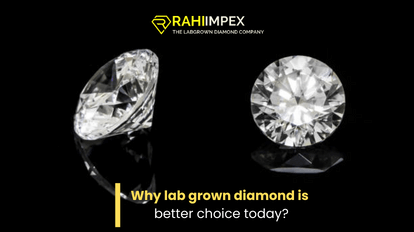
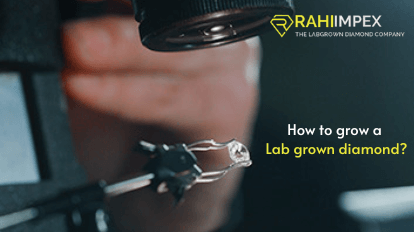
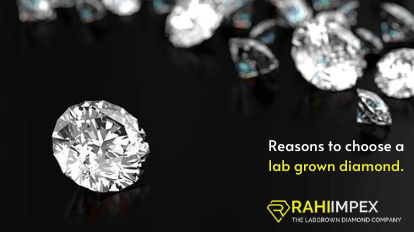
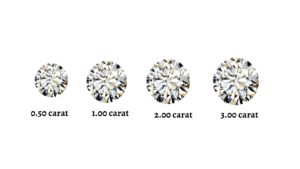


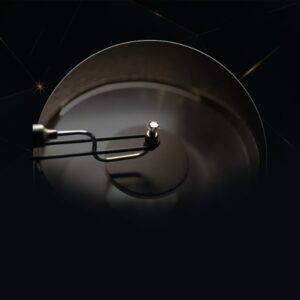
Attention!
This link contains adult material. By clicking, you confirm you are 18+ and agree to our Terms.
Penetrate
Здесь вам открывается шанс наслаждаться большим выбором слотов.
Эти слоты славятся красочной графикой и увлекательным игровым процессом.
Каждая игра даёт особые бонусные возможности, повышающие вероятность победы.
1win games
Игра в игровые автоматы предназначена любителей азартных игр всех мастей.
Есть возможность воспользоваться демо-режимом, и потом испытать азарт игры на реальные ставки.
Попробуйте свои силы и окунитесь в захватывающий мир слотов.
Здесь доступны различные игровые слоты.
Мы собрали лучшую коллекцию слотов от ведущих провайдеров.
Каждый слот отличается оригинальным дизайном, призовыми раундами и максимальной волатильностью.
https://cc-now.com/the-expansive-and-exciting-world-of-online-casinos/
Каждый посетитель может тестировать автоматы без вложений или выигрывать настоящие призы.
Интерфейс максимально удобны, что облегчает поиск игр.
Если вас интересуют слоты, данный ресурс стоит посетить.
Попробуйте удачу на сайте — азарт и удача уже рядом!
gsa captcha breaker coupon
For cutting cycles, the place the first purpose is to reduce body fats while preserving lean muscle mass, a
typical Anavar dosage for men ranges from 50 to eighty milligrams (mg) per day.
Ladies, however, usually discover an efficient range of 10 to twenty mg
per day. These dosages help users obtain a lean and outlined physique whereas minimizing
the chance of virilization in females. It is also one of many few anabolic steroids that may be taken by each women and men without having to worry about the
unwanted aspect effects. Anavar is taken into account by many to be milder than other steroids, nevertheless it still offers
you very good muscle positive aspects and accelerates fats
burning, whereas increasing power and endurance. According to knowledge from US-based sports medicine publications,
Anavar is one of the few anabolic steroids broadly tolerated by women due to its
low androgenic activity. Feminine users often utilize doses as low as 5–10 mg daily
to attain a lean, sculpted physique with out vital threat of masculinizing unwanted effects.
Individuals report wonderful outcomes for weight reduction, cutting, and preserving muscle tissue,
which is where Anavar excels. Anavar is particularly good at getting rid of fats
in additional stubborn areas, and for women, this is normally
across the thighs and buttocks. Although total physique weight could not drop or change a lot, this is due to muscle acquire – fat is still being misplaced.
On a correct food plan, girls can expect to lose 5-10lbs of fat on an Anavar cycle except they are lean. Most male competitors
could have between 3% and 5% body fat throughout competitions.
Our group also makes use of purity exams to see if doses have been lowered.
They are also not very hepatotoxic, which means they can be utilized for longer durations at a
time. Anavar’s half-life can enhance beyond this vary, depending
on the age of the user. For occasion, its half-life could be as excessive as 13.three hours in the aged (23).
Thus, if we state the half-life as 10.four hours, a post-cycle
remedy protocol should start 57 hours after the final dose.
It isn’t advised to take anavar purchase in higher dosages or for longer than recommended.
Oxandrolone in a solo cycle is prepared to provoke a fairly robust enhance in weight but solely in newbies whose body isn’t yet used to the use
of steroids. Nevertheless, when you properly mix Oxandrolone with different
medication, you’ll be able to mutually strengthen their impact and
get a superb outcome in the type of a rise in physique weight.
Though our bodies produce testosterone naturally,
bodybuilders use testosterone boosters which can help them in working
each their slicing and bulking cycles. Testosterone will elevate the metabolic price of
the consumer which finally ends up in the burning
of body fat while on the identical time bulking up lean muscle mass.
Flex Lewis, a distinguished bodybuilder and multiple-time Mr.
Olympia winner in the 212 division, has overtly shared his positive experiences with Anavar.
His advocacy extends past private utilization, as he emphasizes
the importance of acquiring Anavar from reliable sources for safe and effective results.
With the rising fame of Anvarol, a quantity of shops are now retailing the product.
While you ought to purchase the product from different stores, to ensure that you’re shopping for the real
product and in addition qualify for different benefits, we suggest buying from the manufacturer’s website.
The supplement is manufactured by CrazyBulk, a laboratory targeted on researching
and producing steroid options.
In latest years nevertheless the value for anavar has dropped as a outcome of it’s becoming simpler to get hold of once more.
We liv in a day and age now the place with a little little bit of research
you probably can merely go browsing and order some anavar straight to your
own home. In abstract, strategy your Anavar journey with an informed and
discerning mindset. Prioritize authorized and secure acquisition, keep dedicated
to your fitness goals, and stay consistent in your efforts.
By doing so, you set the muse for a balanced and responsible approach
to incorporating Anavar into your fitness routine.
Adhering to prescribed dosages and incorporating post-cycle remedy (PCT) protocols
after the completion of a cycle can assist in restoring pure hormonal
steadiness, lowering the risk of lingering imbalances.
Tell your doctor right away in case you have signs of low blood sugar, corresponding to sudden sweating, shaking, quick heartbeat, hunger, blurred imaginative and prescient, dizziness, or tingling
hands/feet. Your physician may have to regulate your
diabetes medication, exercise program, or diet. If you discover different results not listed above, contact your doctor or pharmacist.
Rarely, males might have a painful or prolonged erection lasting 4 or extra hours.
If this happens, stop utilizing this drug and get medical assist right away, or permanent issues may happen. Prospects appreciate
their thorough approach, as Elite Performance Gear supplies detailed product data, including ingredient lists and verified lab outcomes.
With this sort of controlled-release supply, testosterone levels might be
elevated for as much as eight hours by a single dose of
Anavar®. Present tablets or capsules bioavailability of Androstenolone and
Androsterone is approximately a mere 1.5%-4%. This signifies that a a hundred and fifty mg capsule of Androstenolone would solely ship 2.25-6mg biologically energetic milligrams, which is
lower than your physique naturally produces every day.
Conversely, a single dose of a hundred and fifty mg Androstenolone
in Anavar® delivers between biologically energetic
milligrams. Hi-Tech researchers have been the primary to start to make use of these potent compounds — lengthy earlier
than the current steroid laws have been revamped
to add nearly each prohormone known to be a managed substance.
Subsequently, our know-how to getting the highly effective prohormones into the bloodstream by far
surpasses another company within the industry. We have labored on totally different technologies for over a decade while everybody else enjoyed
the fruits of selling illegal compounds.
Aside from these, as an anabolic steroid, Anavar oxandrolone can also be administered by folks aiming to achieve weight and body mass
for bodybuilding purposes. We advocate consultation with a specialist before
your purchase Anavar online. Anavar, like other anabolic
steroids, can have an effect on levels of cholesterol. It could result in a reduction in high-density lipoprotein (HDL) ldl cholesterol (considered
“good” cholesterol) and an increase in low-density lipoprotein (LDL)
cholesterol (considered “bad” cholesterol).
Whereas personal possession won’t cause you authorized points, you can find yourself
in trouble if you’re caught making an attempt to promote Anavar to someone.
Most people would discover that the cost of pharmaceutical-grade Anavar would just not be value it, as it is considerably dearer
than most different, extra broadly obtainable steroids.
Now you probably can think about the results you’d get in case your Anavar had been changed with Dianabol – and it’s even worse for females because something aside from
Anavar is not going to be as tolerable. Some suppliers around will sell steroids labeled as Oxandrolone, which contain a very completely different (and cheaper) AAS like Dianabol.
50mg day by day is the most effective standard dose
to balance fascinating benefits and unwanted
effects. Few Anavar customers will discover a must
take the dosage beyond 50mg, and most males admit that they don’t
see the benefits they expected below 50mg. But that’s just one aspect of
the story… Performance doses take issues to a
new stage as a outcome of we need to benefit from Anavar’s anabolic results past what’s required in medical therapies.
References:
best steroid on the market (http://www.jobexpertsindia.com)
На этом сайте вы обнаружите разнообразные онлайн-автоматы от казино Champion.
Выбор игр представляет классические автоматы и современные слоты с качественной анимацией и специальными возможностями.
Любая игра разработан для удобной игры как на компьютере, так и на планшетах.
Даже если вы впервые играете, здесь вы найдёте подходящий вариант.
champion зеркало
Слоты работают круглосуточно и работают прямо в браузере.
Дополнительно сайт предоставляет программы лояльности и обзоры игр, для улучшения опыта.
Попробуйте прямо сейчас и насладитесь азартом с играми от Champion!
На данной платформе доступны онлайн-игры из казино Вавада.
Каждый пользователь найдёт подходящую игру — от традиционных игр до новейших слотов с анимацией.
Платформа Vavada открывает широкий выбор популярных игр, включая слоты с крупными выигрышами.
Все игры запускается без ограничений и оптимизирован как для ПК, так и для планшетов.
официальный сайт vavada
Каждый геймер ощутит азартом, не выходя из дома.
Навигация по сайту проста, что обеспечивает без труда начать играть.
Присоединяйтесь сейчас, чтобы открыть для себя любимые слоты!
[url=https://bossbeach.uk/]http://www.bossbeach.uk[/url] – HTTP version of BossBeach UK’s WhatsApp marketing resource center
On this platform, you can find lots of slot machines from famous studios.
Visitors can enjoy retro-style games as well as modern video slots with vivid animation and bonus rounds.
If you’re just starting out or a casino enthusiast, there’s something for everyone.
casino
The games are instantly accessible 24/7 and optimized for laptops and tablets alike.
You don’t need to install anything, so you can start playing instantly.
Platform layout is easy to use, making it simple to browse the collection.
Join the fun, and discover the thrill of casino games!
[url=https://primeshoppingarea.shop/]http://primeshoppingarea.shop/[/url] – Find everything you need in one place
https://www.pointkhabar.com – Stay informed with Nepal’s top news stories
https://bloggingelite.com/ – Blog post promotion techniques
https://bloggingelite.com – Blogging tools and resources
http://www.bloggingelite.com – Increasing blog engagement
http://www.free-books.at – Alternative link to the book repository
Mystery books free download – Thrilling whodunits and crime stories
https://free-books.at/ – Secure HTTPS connection for safe browsing
Free audiobooks online – Stream or download audiobooks without fees
http://free-books.at/ – No-login gateway to free reading
http://www.free-books.at – Alternative link to the book repository
gsa base pay — Access premium GSA verified lists through secure payment options.
Онлайн-площадка — интернет-представительство частного детективного агентства.
Мы предоставляем услуги в области розыска.
Штат сотрудников работает с максимальной этичностью.
Мы занимаемся проверку фактов и анализ ситуаций.
Детективное агентство
Каждое обращение рассматривается индивидуально.
Задействуем проверенные подходы и работаем строго в рамках закона.
Ищете реальную помощь — добро пожаловать.
https://www.en.xrumergsabase.ru/gsa-search-engine-ranker – Access the GSA Search Engine Ranker homepage
http://en.xrumergsabase.ru/gsa-search-engine-ranker/ – GSA SER page link
https://en.xrumergsabase.ru/gsa-search-engine-ranker/ – Go to the official GSA SER page
en.xrumergsabase.ru – Homepage for XRumer and GSA database resources.
Here offers a diverse range of interior wall-mounted clocks for any space.
You can check out modern and vintage styles to match your apartment.
Each piece is chosen for its aesthetic value and durability.
Whether you’re decorating a functional kitchen, there’s always a perfect clock waiting for you.
best quartz silver desk clocks
Our catalog is regularly expanded with trending items.
We ensure customer satisfaction, so your order is always in professional processing.
Start your journey to enhanced interiors with just a few clicks.
http://en.xrumergsabase.ru – Visit the official site for XRumer and GSA database tools.
By rising purple blood cell manufacturing and enhancing nutrient absorption, it
ensures that muscular tissues receive extra oxygen and nourishment.
This permits ladies to interact in longer, extra
intense cardio periods or weight coaching, even at low doses.
It Is essential to notice that Anavar is a light steroid, and it’s
usually well-tolerated by women. Nevertheless, it is
at all times recommended to observe the body’s response to the drug carefully.
Women ought to take note of any unwanted effects and discontinue use in the event that they experience any opposed
reactions.
Satellite Tv For Pc cells are important
for muscle development as a outcome of they assist to repair and regenerate damaged muscle fibers.
Ladies who wish to burn fat and get in form are always on the lookout for the best workout routine and
food regimen plan. See, all Steroids have good and unhealthy effects, and depending on who you’re, what your goals are,
and so forth., sure Steroids might be good for you and others might not.
For most ladies, Anavar is not going to be enough to supply vital results.
Nevertheless, for some girls who’re very energetic and/or eat a healthy diet, Anavar may be useful.
When it comes to steroids, there is a widespread misconception that they are only for males.
If you have a history of mental well being points, approaching with caution is really helpful.
The general weight of a woman utilizing Anavar might
probably not change – that’s due to less body fat and water retention that this compound helps you to get
rid of and elevated lean muscle mass. An inexperienced consumer
may safely complete an eight-week cycle at a dosage of 30–50 mg per day.
This helps to prevent the adverse unwanted effects that low testosterone production could cause.
Anabolic steroids and different forms of fats loss and efficiency PEDs are sometimes stacked with Clen.
First, it allows for a synergistic effect, the place
the combined compounds work together to produce more
pronounced results in comparability with using Anavar alone.
Stacking can also help individuals tailor their cycles to
their particular targets, whether it’s gaining muscle mass, chopping fat, or enhancing athletic efficiency.
Moreover, by strategically combining compounds, users could possibly achieve their desired outcomes more efficiently and effectively, making probably the most out of their Anavar
cycle.
In some circumstances of osteoporosis, it has additionally been demonstrated to be considerably effective as a remedy.
Another popular way of taking Anavar amongst bodybuilders is by taking 50mg of
Anavar per day, alongside with testosterone propionate throughout 8 weeks,
and Clomid can be utilized as much as eleven weeks as part
of PCT. Anabolic steroids are typically very unhealthy for our liver, and the liver takes robust damage over time
whereas using efficiency enhancing medicine. At most it may trigger stress on the liver, however
actual harm may be very rare ,and that’s another reason why Anavar is
prefered by many. Due to this, it’s secure to be used over extended durations of time, like for example as much as
week cycles with out causing any, or if little or no, unwanted
aspect effects.
Anavar is known to boost athletic performance by
selling power, pace, and endurance. Still, Anavar ought to be used with warning since there’s a risk of some side effects,
together with zits, hair loss, or voice deepening.
It’s crucial for ladies to exercise vigilance in relation to the cycle size and dosage to minimize potential adverse results.
In summary, post-cycle remedy performs a vital role in serving to the physique
recover from an Anavar cycle. Post-cycle remedy (PCT) is crucial for people who full an Anavar cycle, because it helps to revive the body’s pure hormonal balance.
During an Anavar cycle, the body’s testosterone levels could also be suppressed, which might lead to opposed results on mood, sexual
perform, and overall health.
Winstrol produces dry muscle positive aspects, because it doesn’t
aromatize and thus causes no water retention. The typical Anavar and Test E cycle lasts between 8-12 weeks, depending on particular person goals
and experience with steroids. During the cycle, customers can count on to see significant positive
aspects in muscle mass and power, in addition to improved muscle
definition and vascularity. Stacking varied anabolic
steroids is a standard follow among athletes and bodybuilders who want to achieve
most features whereas utilizing steroids for as little time
as attainable.
It’s clever for any female to cease taking Primo at
that point (unless virilizing effects usually are not a
concern). However, injecting steroids is not a nice prospect for many people,
Besides, there are a high incidence of infections with Winstrol injections.
Although AST/ALT enzymes will rise, that is unlikely
to trigger any lasting damage to the liver, due to its self-healing
attributes. Thus, a user is simply prone to experience serious liver damage if Winstrol is abused and is taken for several months at a time (without biking off).
Winstrol dosages for males are usually 50 mg per day but can go as excessive as double that.
Bodybuilders typically use T3 to raise their BMR (basal metabolic rate) and enhance
lipolysis, maximizing fats burning earlier than a
contest. HGH cycles normally final anywhere from 6 to 24 weeks,
with sixteen weeks being the average period for a standard bodybuilding cycle.
This is stunning contemplating T3 is a potent fat-burning hormone,
and HGH additionally stimulates lipolysis (fat loss).
HGH additionally affects the metabolism and adipose tissue,
inflicting significant subcutaneous fats loss in people with high ranges of this hormone.
Step on the human progress hormone fuel, hearth up muscle progress and burn through fat
shops.
For those competing in untested federations, the utilization of Anavar is extra
common, however it’s nonetheless essential to method its use responsibly and with a full understanding of the potential risks and
advantages. In abstract, a 4-week Anavar cycle may prove helpful
for feminine athletes looking for to amplify their efficiency inside a comparatively temporary
interval. Although not as outlined, the adjustments acquired
during this timeframe can range from improved energy and endurance to a slight enhance in lean muscle growth.
As at all times, embracing accountable utilization and sustaining a steady exercise routine with acceptable vitamin will assist optimize the
outcomes from an Anavar cycle. In the final stretch of the 4-week
cycle, though shorter than the more in depth cycles, feminine athletes
might anticipate an enhancement in their general bodily performance.
Anavar’s earlier than and after impacts in a 4-week duration are usually marked by heightened vitality ranges,
improved energy, and a lift to muscular endurance.
Before utilizing Anavar, it’s necessary to speak to your physician about the potential dangers and benefits.
You should also have common check-ups to monitor your well
being whereas using the steroid. If you’re considering taking Anavar, it’s essential to remember of its potential unwanted effects on libido.
Anavar is a light steroid, but it can nonetheless have unfavorable
effects on your sexual well being. One of the most common unwanted effects of Anavar is
a decrease in testosterone ranges. Testosterone is a hormone that plays a key function in sexual
perform, so a decrease in testosterone can lead to a lower in libido.
This can lead to decreased sexual need and
problem achieving or maintaining an erection.
References:
list of steroids and what they do
http://en.xrumergsabase.ru/ – Direct link to XRumer and GSA database resources.
This website offers a wide range of prescription drugs for home delivery.
You can quickly get health products from your device.
Our product list includes popular medications and custom orders.
The full range is sourced from trusted distributors.
https://www.provenexpert.com/bimatoprost-online2/
We ensure customer safety, with secure payments and fast shipping.
Whether you’re managing a chronic condition, you’ll find what you need here.
Explore our selection today and experience stress-free support.
buy xrumer database 2025 – Get fresh Xrumer databases for 2025 with guaranteed delivery
https://www.en.xrumergsabase.ru/gsa-search-engine-ranker-verified-link-list — Access trusted GSA verified link lists for powerful SEO campaigns.
https://www.en.xrumergsabase.ru/ – Official website for XRumer and GSA database solutions.
https://www.en.xrumergsabase.ru/gsa-captcha-breaker/ — Learn more about GSA Captcha Breaker and enhance your backlink strategies.
На этом сайте создан для нахождения вакансий на территории Украины.
Здесь вы найдете разные объявления от настоящих компаний.
Мы публикуем объявления о работе в разных отраслях.
Удалённая работа — вы выбираете.
Робота з ризиком
Навигация простой и адаптирован на всех пользователей.
Создание профиля производится в несколько кликов.
Ищете работу? — заходите и выбирайте.
https://www.en.xrumergsabase.ru – Visit the official website for XRumer and GSA databases.
vintageamericanapodcast.com – Premier podcast about classic American culture and history
[url=https://en.xrumergsabase.ru/]www.en.xrumergsabase.ru[/url] – Official site for purchasing XRumer and GSA databases.
https://www.vintageamericanapodcast.com/ – The definitive podcast about 20th century American history and nostalgia
[url=https://mattiaslonneborg.com/]mattiaslonneborg.com/[/url] – Basic domain format with trailing slash for Mattias Lonneborg’s site
https://www.en.xrumergsabase.ru – Visit the official website for XRumer and GSA databases.
https://www.en.xrumergsabase.ru/gsa-captcha-breaker — Visit the official page to explore GSA Captcha Breaker features and pricing.
gsa search engine ranker price – Genuine activation keys with lifetime updates and support
bypass recaptcha v3 – Cutting-edge technology to automatically solve even the toughest Google reCAPTCHA v3